A pleasant forest walk before the rough stuff begins...
Rhododendron albiflorus and false huckleberry, Menziesia ferruginea in the shady woods:
A steep upwards climb on rough "trail", through a boulder-filled drainage and past a scenic waterfall:
Approaching the headwall, Hector Lake in the distance:
And, after a rather airy scramble up the headwall (with the thought that going up is easier than coming down causing a little trepidation!!), and crossing the waterfall stream, and up a talus slope... a bit of flattish ground for a lunch stop!
.... the headwall scramble was down there someplace!
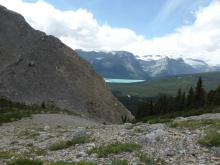
Dramatic slopes of Mt. Andromache:
Up and up a steep slope through more talus (our chosen route to get past, actually around, the second headwall)... and tucked in here and there, some plant life: Hooker's Thistle, Cirsium hookerianum; grass-of-parnassus, Parnassia fimbriata, and Arnica sp.;
Continuing up the steep slope.... Penstemon ellipticus, in varying flower shades:
Ferns.... Polystichium lonchitis on top:
A beautiful specimen of Zigadenus elegans:


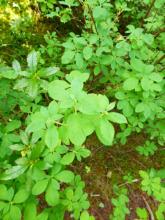
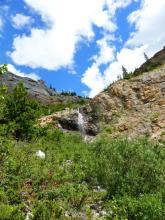


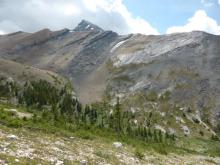
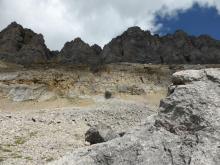
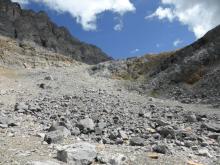
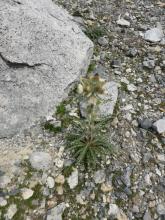

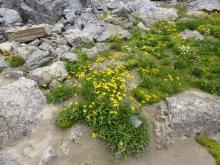
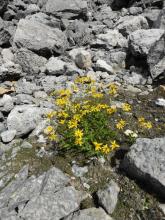
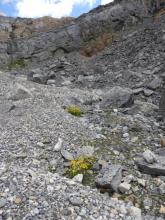
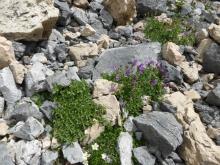
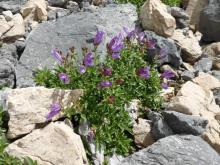
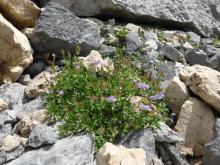
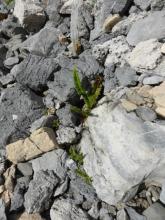
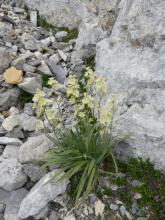
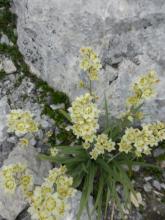


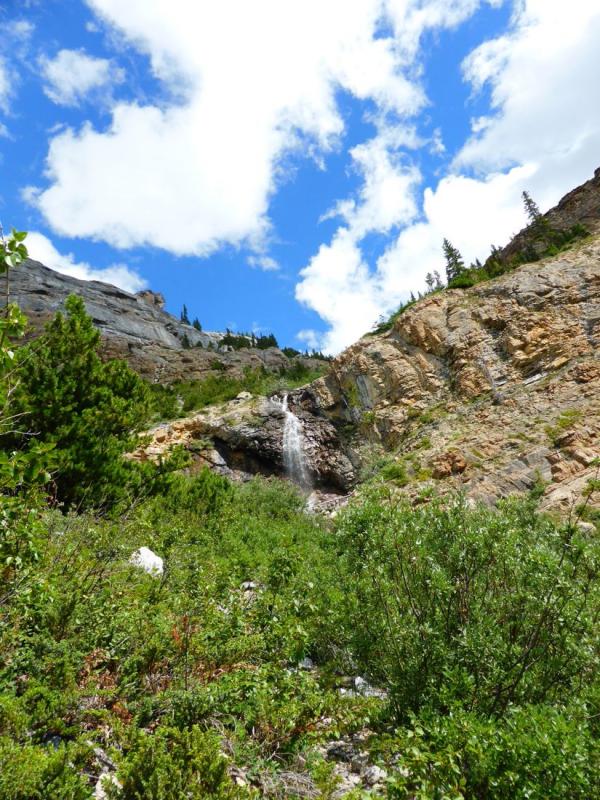
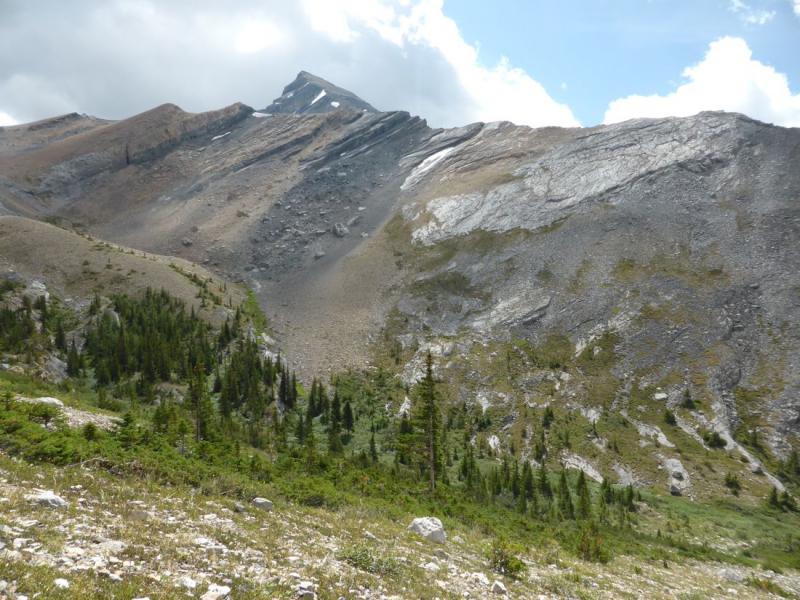
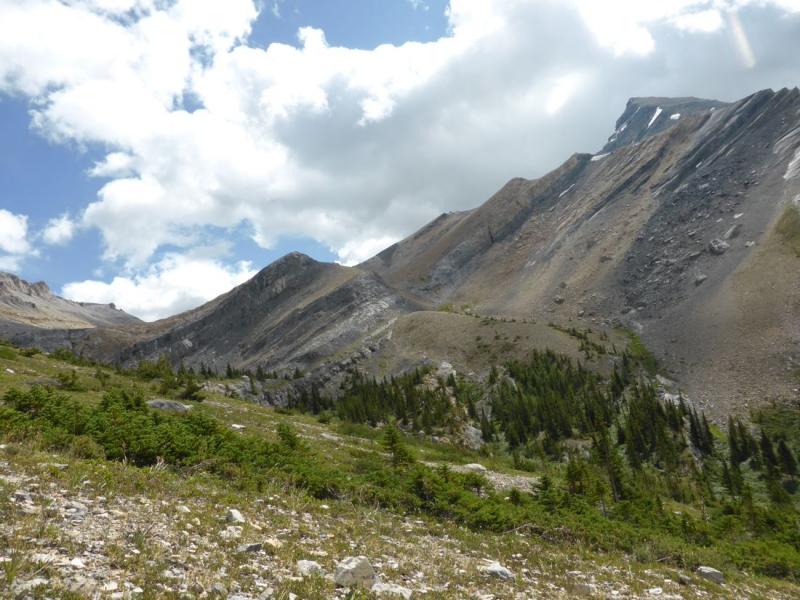
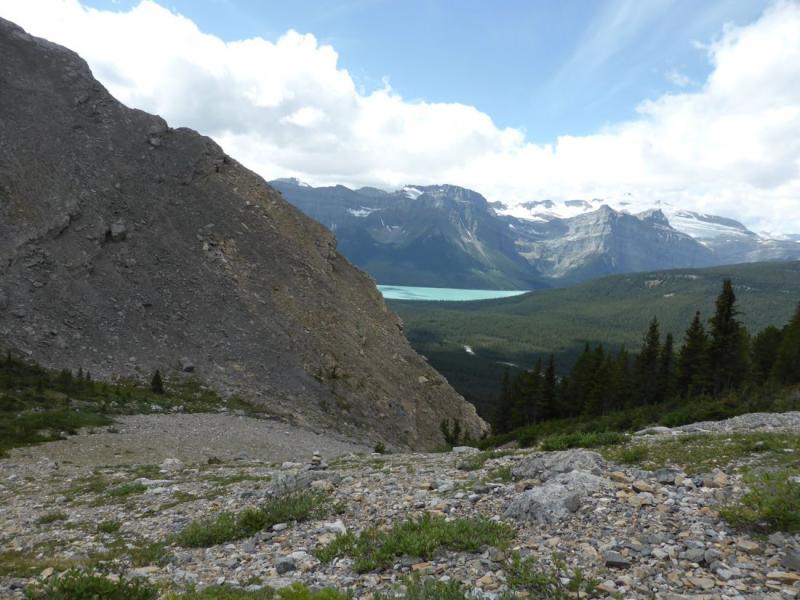
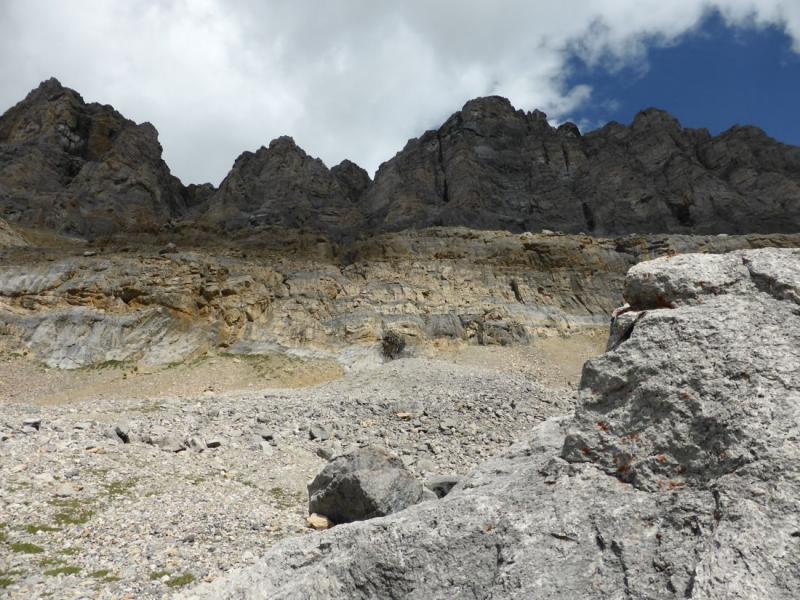


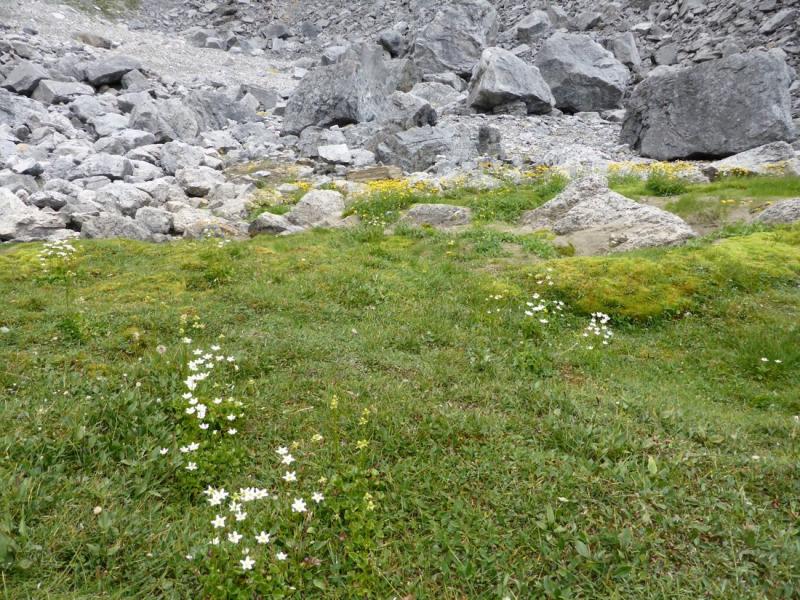





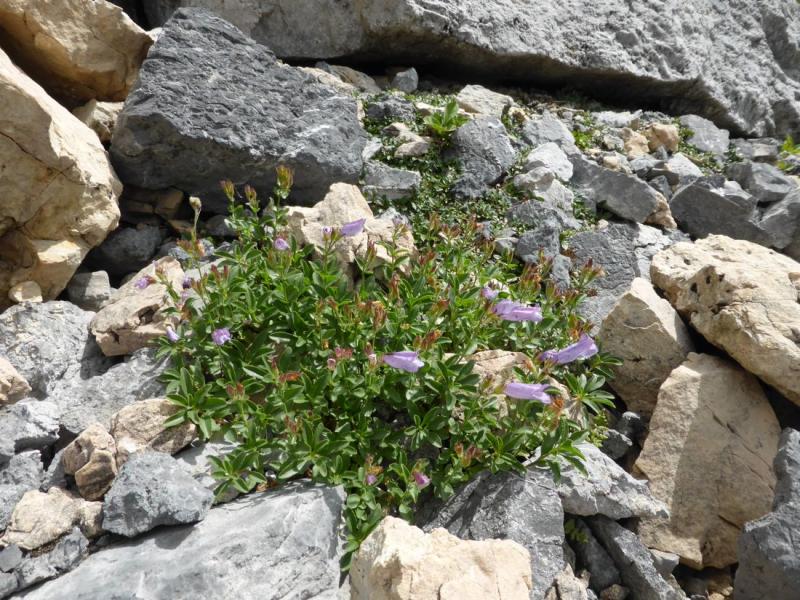

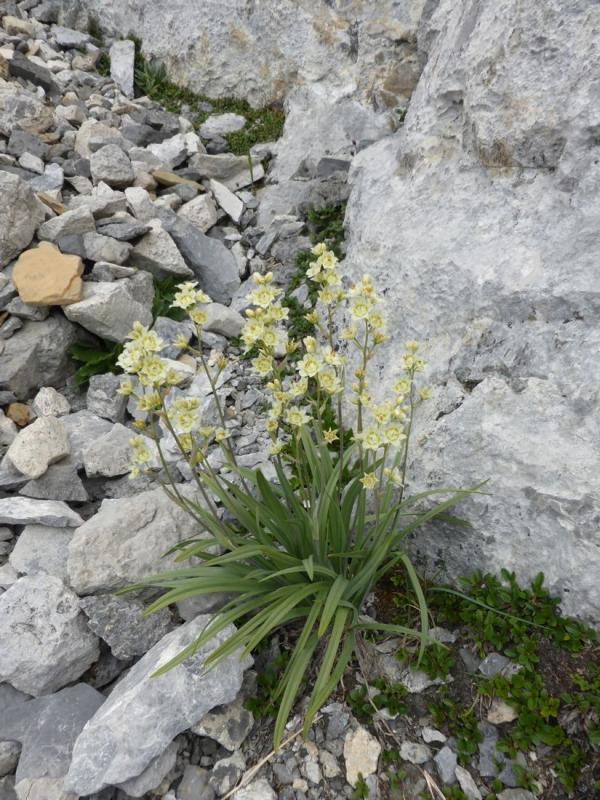
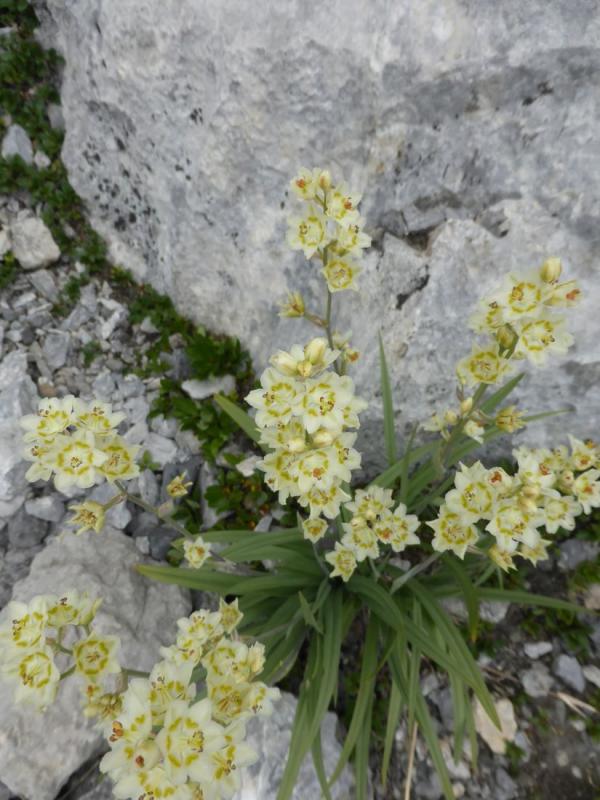
Comments
David L (not verified)
Lori,
Mon, 08/19/2013 - 3:24amLori,
These excursions of yours are brilliant- beautiful shots of the Canadian Rockies and the plants that grow there. As an aside James Hector after whom the lake is named came to Dunedin in 1861 as the Otago Provincial geologist. He he was appointed director of the Geological Survey and Colonial Museum in Wellington and had a distinguished career in this capacity.Two plants that bear his name are Aciphylla hectori and Celmisia hectori.
http://teara.govt.nz/en/biographies/1h15/hector-james
Margaret Young
"A beautiful specimen of
Mon, 08/19/2013 - 10:44am"A beautiful specimen of Zigadenus elegans"
It certainly is, Lori. Can't get it to look like that here, I'm afraid.
What sort of elevation is that growing at?
Mark McDonough
Lori, I agree with Maggi,
Mon, 08/19/2013 - 10:53amLori, I agree with Maggi, that's a wonderful full-faced form of Zigadenus elegans. I wish my skinny greener-flowered form of Z. elegans was a better form, it doesn't show up on a Forum search for some reason, so I specify it again here. When researching the ID on my misnamed plant, I discover that this plant is highly variable.
https://www.nargs.org/forum/zigadenus-id
Lori S. (not verified)
Thanks for the comments, all!
Mon, 08/19/2013 - 9:54pmThanks for the comments, all!
Well, that particular Zigadenus elegans was certainly a lovely specimen looking nice and fresh and photo-worthy! Happily, though, I wouldn't say it's unusual in flower or plant form for this area - looking back through my photos, I see many others like it in different places and elevations... lucky us! :-) The elevation at that particular spot would have been maybe 2300-2400m as a guess (in the area that I see referred to as "the second headwall").
Hector Pass area:
Saxifraga aizoides; Silene uralensis:
Base of LIttle Hector (those braver and more energetic than me would ascend the angled slope to the summit and terrific views of the glacier):
One last shot of a brooding landscape:
Trond Hoy
Lori, I hadn't commented yet
Tue, 08/20/2013 - 11:21amLori, I hadn't commented yet but I was thinking of it - and waiting to look whether you had more pictures to show!
These trips, are they one day or several? And how many hours/km do you walk a day?
Lori S. (not verified)
Everything I've posted on
Thu, 08/22/2013 - 9:00pmEverything I've posted on this forum is from a day-hike, including this trip. Our hikes vary but probably average about 4.5 hours of walking and an average elevation gain of about 650m (up to about 1100m now and then). Distance varies from a very short one like this (probably only ~3km , though steep, given that we only went to the pass; scramble guide says 6-9 hours and 1260m elevation gain to get to the top of Little Hector) to about 26 km; average distance is probably about 15 km... all very rough estimates.
cohan (not verified)
Lori, do you have any idea
Thu, 09/19/2013 - 12:26amLori, do you have any idea whether the more compact higher elevation Zigadenus stay compact in cultivation?
The forms around here are all lovely, just taller and leafier- not a problem at all, just a matter of different siting- mine is placed on a lower area beside one of the main raised ridges...
Lori S. (not verified)
I don't know, as I haven't
Fri, 09/20/2013 - 5:10pmI don't know, as I haven't tried growing them. I don't know the provenance of the seeds from which my plants in the front yard were grown either. I would say that the flower size and flower form seems about the same from alpine to grassland forms around here, though, from what I've seen.
cohan (not verified)
Yeah, the flowers on plants
Sat, 09/21/2013 - 10:45amLori S. (not verified)
Hmmm, now I'm starting to
Sat, 09/21/2013 - 11:54amHmmm, now I'm starting to wonder... are you seeing really tiny ones somewhere? The ones we see, as high up as we see them, are still around 10" - 12" tall in flower... ?
cohan (not verified)
That's probably about right-
Sun, 09/22/2013 - 3:44pmThat's probably about right- the smallest ones I've seen were not in flower, so who knows if they were even mature. Here, though I haven't measured (I'll take a closer look at the dried seed stalks on mine when I go back out) they must get close to 2 feet tall with large clumps of large leaves on mature plants.
EDIT- I'll post a pic of mine in Image of the Day..
Margaret Young
Crumbs, if all the Zigadenus
Tue, 08/20/2013 - 3:35amCrumbs, if all the Zigadenus look that good I feel even worse!
Thanks for the elevation note, too , Lori.